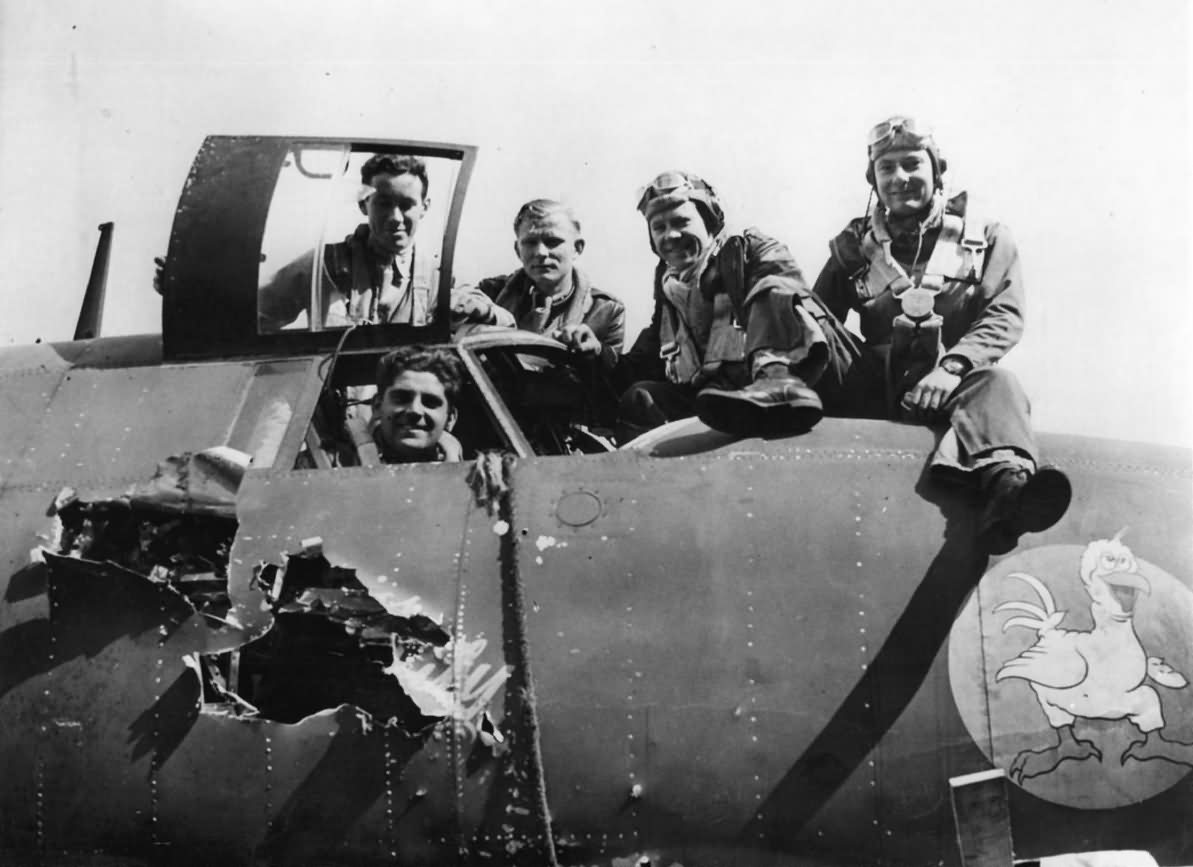The 323rd Bomb Group (Medium) was a significant component of the Eighth Air Force during its brief tenure in 1943, playing a key role in medium-level bombing missions using the B-26 Marauder.
Overview and Assignments
- Assigned to Eighth Air Force: 12 May 1943 – 16 October 1943.
- Wing & Command Assignments:
- VIII Bomber Command (BC), 3rd Bomb Wing (BW): May 1943.
- VIII Air Support Command (ASC), 3rd Bomb Wing: 15 June 1943.
Component Squadrons
- 453rd Bombardment Squadron (Medium): Squadron code VT.
- 454th Bombardment Squadron (Medium): Squadron code RJ.
- 455th Bombardment Squadron (Medium): Squadron code YU.
- 456th Bombardment Squadron (Medium): Squadron code WT.
Combat Aircraft
- B-26B Marauder: Used from block 20.
- B-26C Marauder: Majority of original aircraft from block 6.
Stations
- Horham: 21 May 1943 – 14 June 1943 (first air echelon arrived between 27-31 May 1943).
- Earls Colne: 14 June 1943 – 11-27 July 1944 (last air echelon arrived on 25 June 1943).
Group Commanding Officer
- Col Herbert B. Thatcher: 14 August 1942 – circa 13 November 1943.
Combat Operations
- First Mission: 16 July 1943.
- Last Mission: 9 October 1943.
- Total Missions: 33.
- Aircraft Missing in Action (MIA): 3.
- Enemy Aircraft Claims: 3 destroyed.
Major Awards
- None: Despite its efforts, the group did not receive any major awards during its time with the Eighth Air Force.
Claims to Fame
- The 323rd Bombardment Group was notable for flying the first 8th Air Force medium-level bombing missions with B-26 Marauders.
Early History
- Activation: The group was activated on 4 August 1942 at Columbia Army Air Base, South Carolina.
- Training: Initial training commenced at MacDill Field, Florida, on 21 August 1942, where the group trained with B-26 aircraft. It later moved to Myrtle Beach Field, South Carolina, from 1-3 November 1942.
- Deployment:
- The first air echelon departed for Baer Field, Indiana, in mid-February 1943, where new B-26C aircraft were assigned as they became available.
- The 453rd, 454th, and 455th Bombardment Squadrons moved to Hunter Field, Georgia, in preparation for the flight to the UK via the southern ferry route and departed in early May 1943.
- The 456th Bombardment Squadron traveled via the northern ferry route in June 1943.
- The ground echelon left Myrtle Beach on 25 April 1943 and sailed on the Queen Elizabeth on 5 May 1943, arriving in Gourock, Scotland, on 11 May 1943.
Subsequent History
- Reassignment: The group was reassigned to the 9th Air Force, IX Bomber Command (BC) on 16 October 1943. It moved to Beaulieu in July 1944 and later to France in late August 1944, where it flew tactical missions in support of Allied ground forces. The group was inactivated in the USA in December 1945.
Aircraft Markings and Color Schemes
- B-26B/C Marauders (May 1943 – October 1943):
- The aircraft were finished in Dark Olive Drab and Neutral Gray with blue-grey squadron codes painted forward of the cocarde (national insignia) on both sides of the fuselage, with the individual aircraft call-letter aft, sized at 40 inches high.
- Due to the location of the cocarde, the call-letter had to be positioned on the fuselage under the horizontal tail surfaces.
- Not all aircraft had received these letters when the new national insignia form was introduced. On those that already had fuselage letters, the white rectangles of the revised national insignia sometimes intruded over the call-letter.
- In some cases, the letter was repainted further back, and in others, the cocarde was painted out and a new AN-I-9a insignia was painted on approximately 40 inches further forward.
- Most replacement aircraft had the national insignia repositioned further forward so that only about one-third of the call-letter was under the tailplane.
- On the original B-26C-6s, the 453rd and 455th Bombardment Squadrons used letters from A in alphabetical order, while the 454th and 456th used letters from Z in reverse order.
